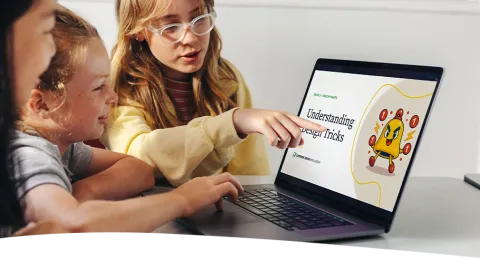
Digital Citizenship Week is October 20–24!
Join teachers worldwide to promote a healthy, positive approach to media and tech.
Take a look inside 5 images
Intro to Cursive, by Montessorium
Pros: Simple aesthetics and no-nonsense presentation make the learning goal clear.
Cons: Letter-writing practice only; cursive demands whole-word writing.
Bottom Line: Simple tool for teaching kids to write single cursive letters; needs more.
Teachers can use Intro to Cursive to jazz up more traditional paper-and-pencil worksheets. Kids hear letter names and sounds as they practice writing -- and even identify letters by name or sound -- so some letter learning is built in. Give kids a good sense of why they might want to learn cursive. Developers have a few blog posts and articles about the importance of cursive, in which they point out its historical meaning, among other things. The real beauty of cursive comes out in whole words, of course, so be sure to supplement single-letter, on-screen practice with real, paper-and-pencil practice writing complete words and sentences. Have kids write letters to each other or to pen pals across the world -- or even just across the hall. Check how kids write on paper to help them learn to write legibly. This app's deliberate demonstrations on how to write letters may be particularly useful for kids having trouble writing legibly.
In what's essentially an electronic cursive workbook, kids choose uppercase or lowercase letters, which are presented by letter name or sound, and trace single cursive letters, one at a time. After randomly presenting and demonstrating how to write three letters, the app pauses for review: Kids tap the requested letter and then trace again, this time without a demonstration. This activity repeats, seemingly endlessly. Kids can also work from the chalkboard, where they choose the letter(s) or two-letter phonograms they want to practice. A final activity offers a virtual sandbox in which kids can write or draw on their own, or watch a cursive letter appear and disappear and then attempt to write the letter from memory.
Just because apps can have lots of bells and whistles doesn't mean they need to. Intro to Cursive seems to follow that philosophy, with a clean, aesthetically pleasing look, and one simple, well-presented purpose: have kids practice writing cursive letters. Without distractions, kids can easily focus on dragging a fingertip across the screen to draw letters by tracing an outline, or from memory. If they write a letter incorrectly, they get immediate feedback.
On the other hand, the app leaves unexplored a number of opportunities for taking advantage of the digital platform. For example, it would be beneficial if kids could mix and match letters to write words. For teachers, algorithms could help focus attention on kids' strengths and weaknesses, and keep track of their progress as they write more legible letters. These are the kinds of features you might expect considering the app's relatively hefty price tag.












